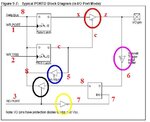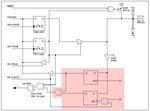PA3040
Advanced Member level 3
Dear All,
Please see the attached picture for me
This is the understanding purpose of all parts of the PORTD block diagram
I would like to understand step by step than all together at once
Therefore the attached picture have two D flip flop ,both are smiler to each other, Am I correct?
The D flip-flop tracks the input, making transitions with match those of the input D. The D stands for "data"; this flip-flop stores the value that is on the data line. It can be thought of as a basic memory cell
Let say I want to configure PortD pin 0 as an out put
Then
first bannksel
BCF TRISD,0
It would be much appreciated if some one can teach me the data flow using attached picture
Thanks in advance

Please see the attached picture for me
This is the understanding purpose of all parts of the PORTD block diagram
I would like to understand step by step than all together at once
Therefore the attached picture have two D flip flop ,both are smiler to each other, Am I correct?
The D flip-flop tracks the input, making transitions with match those of the input D. The D stands for "data"; this flip-flop stores the value that is on the data line. It can be thought of as a basic memory cell
Let say I want to configure PortD pin 0 as an out put
Then
first bannksel
BCF TRISD,0
It would be much appreciated if some one can teach me the data flow using attached picture
Thanks in advance

Last edited:
